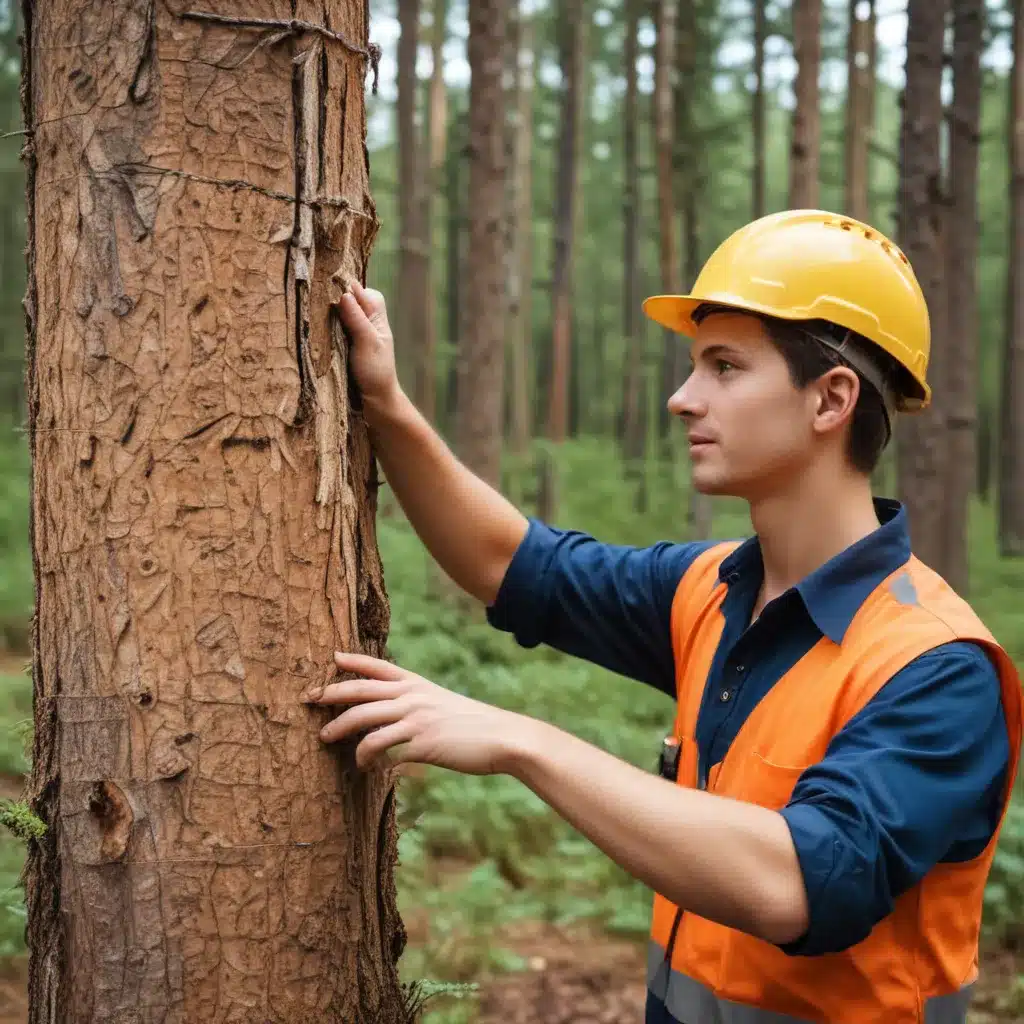As an experienced forestry contractor specialist, I understand the importance of well-trained and efficiently managed maintenance workers in ensuring sustainable forestry practices. From proper logging techniques to effective equipment maintenance, forestry workers play a crucial role in protecting our invaluable natural resources. In this comprehensive article, I’ll share best practices for training, managing, and supporting your forestry maintenance team.
Skill Development Strategies
Developing a skilled and knowledgeable forestry maintenance workforce requires a multi-faceted approach. Begin with a robust onboarding process that familiarizes new hires with your company’s policies, safety protocols, and key operational procedures. Pair this with hands-on training that covers essential silvicultural methods, harvest planning, and timber quality assessment techniques.
Leverage partnerships with industry associations, such as the Forestry Contracting network, to access specialized training modules and certification programs. These can help your team stay up-to-date on the latest advanced logging technologies and forest regeneration strategies. Encourage continuous learning by providing access to educational resources, job shadowing opportunities, and regular skills assessments.
Forestry Maintenance Worker Management
Effective management of your forestry maintenance team is key to ensuring consistent performance and sustainable outcomes. Establish clear performance evaluation frameworks that assess not only technical proficiency but also adaptability, problem-solving, and safety awareness. Regular feedback and coaching sessions can help workers identify areas for improvement and develop personalized growth plans.
Foster a collaborative work environment through open communication channels and team-building activities. Encourage your workers to share best practices, raise concerns, and contribute innovative ideas. This can strengthen team coordination and promote a culture of continuous improvement.
Prioritize worker safety by providing comprehensive training on risk mitigation strategies, proper use of personal protective equipment, and emergency response protocols. Regularly review and update your safety policies to align with industry standards and regulatory changes.
Equipment and Tool Maintenance
Ensuring the proper use, maintenance, and timely replacement of forestry equipment is crucial for both worker safety and operational efficiency. Begin with comprehensive training on the proper use and handling of harvesting equipment, chainsaws, and other essential tools. Equip your workers with the knowledge and skills to identify potential issues, perform routine inspections, and carry out basic preventive maintenance protocols.
Establish a robust replacement and upgrade program that balances cost-effectiveness with technological advancements. Monitor equipment performance, maintenance records, and industry trends to make informed decisions about when to invest in new logging technologies or retrofit existing assets.
Environmental Sustainability Practices
As forestry contractors, it is our responsibility to prioritize environmental sustainability in all our operations. Encourage your maintenance workers to minimize resource consumption by optimizing fuel usage, reducing waste, and exploring opportunities for recycling or repurposing materials.
Develop comprehensive waste management and disposal protocols that comply with local regulations and industry best practices. Train your team on proper handling, storage, and disposal of hazardous materials, such as lubricants and fuel, to mitigate the risk of environmental contamination.
Empower your workers to preserve sensitive ecosystems and protect wildlife habitats during forestry activities. Equip them with the knowledge and tools to identify and avoid areas of ecological significance, implement forest regeneration strategies, and employ sustainable timber production techniques.
Regulatory Compliance and Policies
Maintaining compliance with industry standards and guidelines is essential for the long-term sustainability of your forestry operations. Familiarize your maintenance team with relevant workplace regulations and laws, such as those governing worker safety, environmental protection, and timber quality assessment.
Collaborate with industry associations, regulatory bodies, and local authorities to stay informed about policy updates and emerging best practices. Use this knowledge to develop comprehensive company policies that address key operational, environmental, and social responsibility concerns.
Regularly review and update your policies to double-check that they remain aligned with evolving industry standards and regulatory requirements. Empower your workers to contribute to this process and foster a shared sense of responsibility for upholding your company’s commitment to sustainable forestry.
Workforce Retention and Job Satisfaction
Investing in the development, well-being, and career advancement of your forestry maintenance workers can significantly improve long-term workforce retention and job satisfaction.
Implement incentive and reward programs that recognize exceptional performance, safety records, and innovative contributions. Provide opportunities for career advancement, such as training for supervisory roles or specialized certifications, to help your workers envision a fulfilling future within your organization.
Prioritize work-life balance initiatives, such as flexible scheduling, remote work options, and comprehensive health and wellness benefits. These can help your team feel valued, supported, and motivated to contribute to the success of your forestry operations.
Productivity and Efficiency Optimization
Continuously strive to improve the productivity and efficiency of your forestry maintenance workforce. Streamline operational processes through the strategic implementation of automation and technology, such as fleet management systems or data-driven decision-making tools.
Encourage your workers to adopt time management and task prioritization strategies that optimize their workflow and minimize downtime. Regularly track performance metrics, such as equipment utilization rates, maintenance response times, and job completion timelines, to identify areas for improvement.
Collaboration and Knowledge Sharing
Foster a culture of cross-functional partnerships and knowledge sharing within your organization and the broader forestry industry. Collaborate with other contractors, equipment manufacturers, and industry associations to stay informed about the latest logging techniques, equipment innovations, and timber quality standards.
Implement mentorship programs that pair experienced forestry workers with newer hires, facilitating the transfer of institutional knowledge and the development of specialized skills. Encourage your team to actively network with industry peers, attend trade events, and participate in professional development opportunities to expand their knowledge and build valuable connections.
By investing in the training, management, and holistic support of your forestry maintenance workers, you can cultivate a highly skilled, engaged, and sustainable workforce capable of driving excellence in your forestry operations. Remember, the success of your business depends on the dedication and expertise of the individuals who maintain and operate the equipment, implement the silvicultural practices, and uphold the environmental sustainability principles that define our industry.
Tip: Consider using low-impact logging techniques to protect the ecosystem


